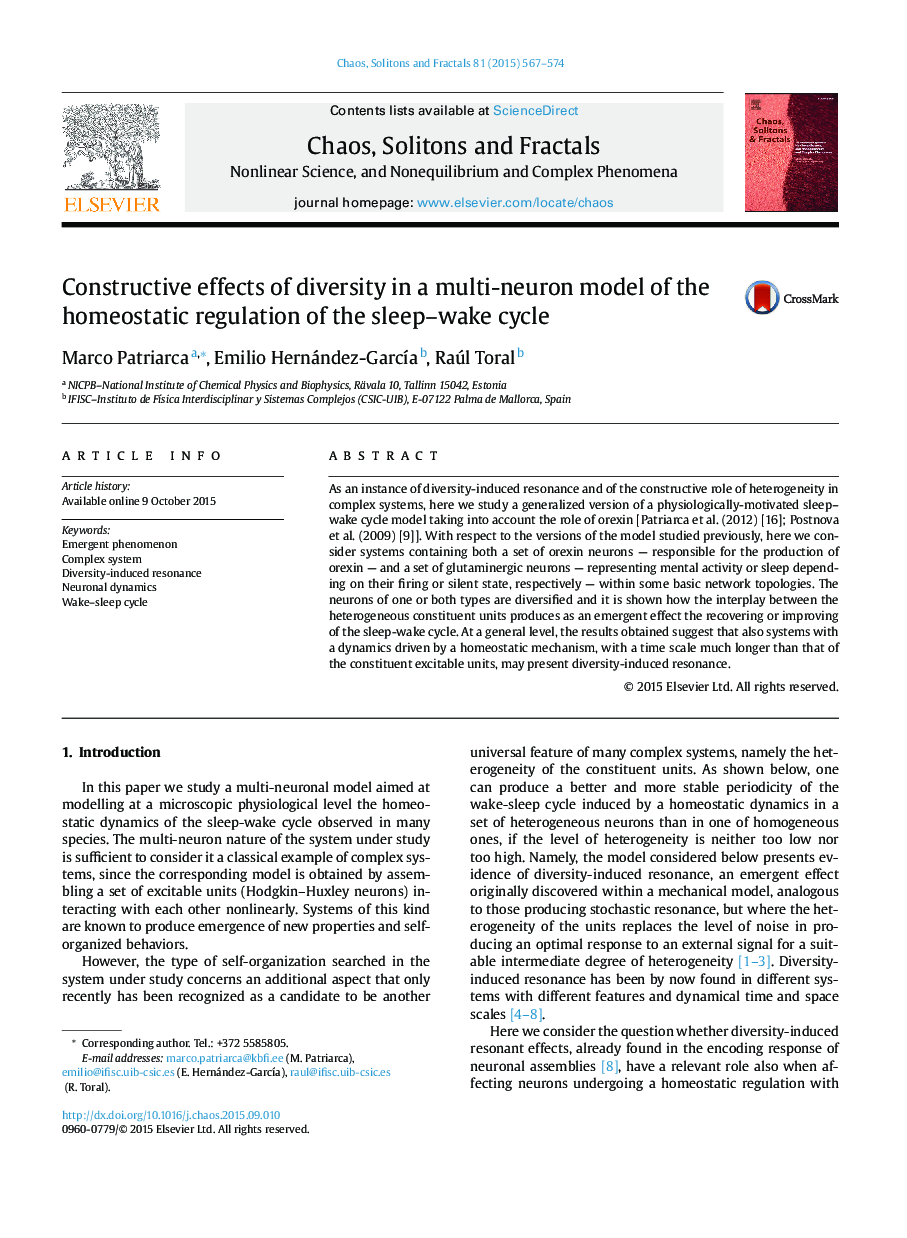| Article ID | Journal | Published Year | Pages | File Type |
|---|---|---|---|---|
| 1888452 | Chaos, Solitons & Fractals | 2015 | 8 Pages |
Abstract
As an instance of diversity-induced resonance and of the constructive role of heterogeneity in complex systems, here we study a generalized version of a physiologically-motivated sleep-wake cycle model taking into account the role of orexin [Patriarca et al. (2012) [16]; Postnova et al. (2009) [9]]. With respect to the versions of the model studied previously, here we consider systems containing both a set of orexin neurons - responsible for the production of orexin - and a set of glutaminergic neurons - representing mental activity or sleep depending on their firing or silent state, respectively - within some basic network topologies. The neurons of one or both types are diversified and it is shown how the interplay between the heterogeneous constituent units produces as an emergent effect the recovering or improving of the sleep-wake cycle. At a general level, the results obtained suggest that also systems with a dynamics driven by a homeostatic mechanism, with a time scale much longer than that of the constituent excitable units, may present diversity-induced resonance.
Related Topics
Physical Sciences and Engineering
Physics and Astronomy
Statistical and Nonlinear Physics
Authors
Marco Patriarca, Emilio Hernández-GarcÃa, Raúl Toral,
